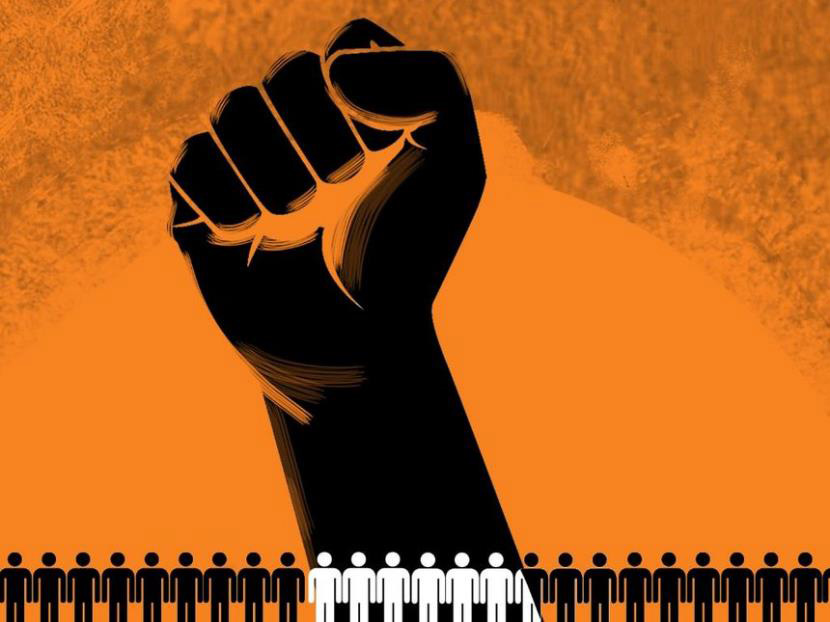Table of Contents
Introduction
Public Interest Litigation means a social action which is initiated before the Court of law for the purpose of enforcement of general public interest. Initially PIL was considered as a strategy to enable public spirited citizens and social activists to mobilize favourable judicial concern on behalf of the victimised and oppressed groups. It has become today a powerful weapon of the judicial activism for
involvement in social, political and economic affairs of the society.
The explicit purpose of public interest litigation is to alienate the suffering of all those who have borne the burning of intensive treatment at the hands of fellow human beings. Transparency in public life and fair judicial action are the right answers to check increasing menace of violation of legal rights. Traditional rule was that the right to move the Supreme Court is only available to those whose fundamental rights are infringed.
Meaning & Definition Of Public Interest Litigation
Public interest litigation is not defined in any statute or in any act. It has been interpreted by judges to consider the intent of the public at large. Although the main and only focus of such litigation is only Public Interest there are various areas where a Public interest litigation can be filed. For eg.
- Violation of basic human rights of the poor.
- Content or conduct of government policy.
- Compel municipal authorities to perform a public duty.
- Violation of religious rights or other basic fundamental rights.
In Black’s Law Dictionary: “Public Interest Litigation means a legal action initiated in a court of law for the enforcement of public interest or general interest in which the public or class of the community have pecuniary interest or some interest by which their legal rights or liabilities are affected.”
What is a Public Interest
Black Law Dictionary says-:
“Something in which the public, the community at large has something pecuniary interest, or some interest by which their legal rights or liabilities are affected. It does not mean anything so narrow as mere curiosity, or as the interest of the particular localities, which may be affected by the matters in question. Interest shared by the citizens generally in the affairs of local, State or national government is the Public Interest“.
Constitutional Provisions Of PIL
A citizen has the right to approach the Supreme court under Article 32 for the enforcement of their fundamental rights mentioned under Part III of the Constitution. Article 32 is remarked as the heart and soul of the Constitution. The rights under part III would be meaningless if they cannot be enforced.
The Supreme court can declare a law ultra vires if it is inconsistent with the rights mentioned under part III. The Supreme court can issue orders or directions or writs such as habeas corpus, certiorari, mandamus, prohibition, quo warranto to enforce the rights of the citizens.
Similar jurisdiction is also conferred to the High courts under Article 226 to issue writs or directions or orders for the enforcement of fundamental rights. A citizen can avail of Article 32 only if there is a violation of a fundamental right. However, Article 226 is available not only for the enforcement of fundamental rights but also for other purposes. Therefore, the power under Article 32 is more restricted than the powers under Article 226.
So, citizens can file a PIL before the Supreme Court under Article 32 or before the High Court under Article 226. The aggrieved party need not appear before the court to enforce the right under Article 32. The court has the power to suo motu take cognizance in any matter and proceed with it. Moreover, the courts also have the power to treat any case with private interest as a publicly interesting case.
Also, under Article 39A the states must ensure that the operation of the legal system upholds justice and fairness equally to all citizens and the establishment and working of services that provide free legal aid to economic and socially backward citizens. The state can also pass legislation to ensure this. Thus, the crux of Article 39A also mandates PIL, which also seeks justice equally for everyone.
Guidelines For Filing an PIL
- There is a personal injury or injury to a disadvantaged section of the population for whom access to legal justice system is difficult.
- The person bringing the action has sufficient interest to maintain an action of public injury.
- The injury must have arisen because of breach of public duty or violation of the Constitution or of the law, It must seek enforcement of such public duty and observance of the constitutional law or legal provisions.
- This is a powerful safeguard and has provided immense social benefits, where there is essentially failure on the part of the executive to ameliorate the problems of the oppressed citizens. Considering the importance of this subject, three articles from the web on the subject are reproduced hereunder.
Procedure Of Filing A PIL
- Make an informed decision to file a case.
- Consult all affected interest groups who are possible allies.
- Be careful in filing a case because:
- Litigation can be expensive.
- Litigation can be time consuming.
- Litigation can take away decision making capability/strength from communities.
- An adverse decision can affect the strength of the movement.
- Litigation involvement can divert the attention of the community away from the real issues.
- If you have taken the decision:-
- Collect all the relevant information
- Be meticulous in gathering detail for use in the case. If you plan to use photographs, retain the negatives and take an affidavit from the photographer. Retain bills.
- Write to the relevant authorities and be clear about your demands.
- Maintain records in an organized fashion.
- Consult a lawyer on the choice of forum.
- Engage a competent lawyer. If you are handling the matter yourself make sure you get good legal advice on the drafting.
- A PIL can be filed only by a registered organization. If you are unregistered, please file the PIL in the name of an office bearer/member in his/her personal capacity.
- You may have to issue a legal notice to the concerned parties/authorities before filing a PIL. Filing a suit against the government would require issuing a notice to the concerned officer department at least two months prior to filing.
Evolution Of PIL In India
The seeds of the concept of public interest litigation were initially sown in India by Justice Krishna Iyer, in 1976 in Mumbai Kamgar Sabha vs. Abdul Thai.
The first reported case of PIL was Hussainara Khatoon vs. State of Bihar (1979) that focused on the inhuman conditions of prisons and under trial prisoners that led to the release of more than 40,000 under trial prisoners.
Right to speedy justice emerged as a basic fundamental right which had been denied to these prisoners. The same set pattern was adopted in subsequent cases.A new era of the PIL movement was heralded by Justice P.N. Bhagawati in the case of S.P. Gupta vs. Union of India. In this case it was held that “any member of the public or social action group acting bonafide” can invoke the Writ Jurisdiction of the High Courts (under article 226) or the Supreme Court (under Article 32) seeking redressal against violation of legal or constitutional rights of persons who due to social or economic or any other disability cannot approach the Court.
By this judgment PIL became a potent weapon for the enforcement of “public duties” where executive action or misdeed resulted in public injury. And as a result any citizen of India or any consumer groups or social action groups can now approach the apex court of the country seeking legal remedies in all cases where the interests of the general public or a section of the public are at stake. Justice Bhagwati did a lot to ensure that the concept of PILs was clearly enunciated. He did not insist on the observance of procedural technicalities and even treated ordinary letters from public-minded individuals as writ petitions.
The Supreme Court in Indian Banks’ Association, Bombay & Ors. vs. M/s Devkala Consultancy Service and Ors held :- “In an appropriate case, where the petitioner might have moved a court in her private interest and for redressal of the personal grievance, the court in furtherance of Public Interest may treat it a necessity to enquire into the state of affairs of the subject of litigation in the interest of justice.” Thus, a private interest case can also be treated as a public interest case.
In M.C Mehta vs. Union of India: In a Public Interest Litigation brought against Ganga water pollution so as to prevent any further pollution of Ganga water. The Supreme Court held that “The petitioner, although not a riparian owner, is entitled to move the court for the enforcement of statutory provisions, as he is the person interested in protecting the lives of the people who make use of Ganga water.”
Similarly in Vishaka v. State of Rajasthan: The judgement of the case recognized sexual harassment as a violation of the fundamental constitutional rights of Article 14, Article 15 and Article 21. The guidelines also directed for the Sexual Harassment of Women at Workplace (Prevention, Prohibition and Redressal) Act, 2013).
Reasons For the Growth Of Development Of PIL In India
- The Anglo-American System of justice has been adopted have taken the view that where state action has caused injury to the general public as distinguished from particular individuals, it would be the duty of the state, under democratic system, to afford relief against maladministration, in litigation brought by any member of the public, without insisting that the petitioner must be one who has been particularly affected by the public wrong in question.
- Where a person who has suffered a legal wrong or legal injury or whose legal right or legally protected interest is violated, is unable to approach the court on account of his socially or economically disadvantaged position, some other person can invoke assistance of the court for the purpose of providing judicial redress to the person wronged or injured, so that the legal wrong caused to such person does not go undressed and justice is done to him.
- Where there has been a breach of a public duty or breach of some constitutional provision, causing injury to the public, any person who is not a mere busybody, would be allowed to bring a petition under Art. 226 to seek enforcement of breach of public duty or
such provision of the constitution.
- A rate-payer of a local authority can also challenge an illegal action of that
authority. Being a tax-payer, he is closely connected and directly interested in the proper administration of the local authority.
- If public duties are to be enforced and social collective ‘differed’ rights and interests are to be protected, we have to utilise the initiative and zeal of public minded persons and organisations by allowing them to move the court and act for a general or group interest, even though, they may not be directly injured in their own rights. In such cases, any citizen acting bona-fide and who has sufficient interest has to be accorded standing.
Conclusion
We can say that Public Interest Litigation is working as an important instrument of social change. It is working for the welfare of every section of society. It’s the sword of every one used only for taking justice. The innovation of this legitimate instrument proved beneficial for developing countries like India. PIL has been used as a strategy to combat the atrocities prevailing in society. It’s an institutional initiative towards the welfare of the needy class of the society.



